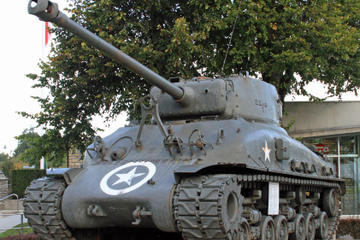Airborne Museum
TIME : 2016/2/22 10:52:22

Airborne Museum
The hallowed history of the D-Day landings on the beaches of Normandy draws thousands of visitors a year to this beautiful region of France. Along its now-calm coastline are tours, memorials, cemeteries, museums and stark reminders of the events of June 6, 1944. As you look out over the beaches and aided by the news reels from the time as well as modern-day recreations for the silver screen, it can be almost too easy to feel as though you can see exactly what happened, right in front of you.
But not everyone who fought that day arrived by boat. In the wee hours that morning – in fact, just after midnight - American paratroopers started descending into the region. Through a series of unfortunate events the paratroopers were not able to rally in order to provide organized support for the coming attack, but their scattered arrival sent the Germans running in all directions to defend their hold, a move which ultimately was one of the many factors in the Allies' victory.
Most of the action from this event, code-named Operation Neptune, centered on the small village of Sainte-Mère-Église, which today is the site of one of the most fascinating WWII sites in Normandy: The Airborne Museum. Here visitors can relive the harrowing story of the 82nd and 101st Airborne divisions and see a Douglas C-47 as well as a Waco Glider. The exhibits, presentations, and items housed in this parachute-shaped museum fill in many of the missing pieces to just how the Allied forces battled their way to victory.
While in the village of Sainte-Mère-Église, don't forget to look for what appears to be a parachute wrapped around one of the spires of the church. This is a memorial to John Steele, who remained stranded up there because of his caught parachute, and who escaped eventual German arrest to go on and help his division retake the town for the Allies.
